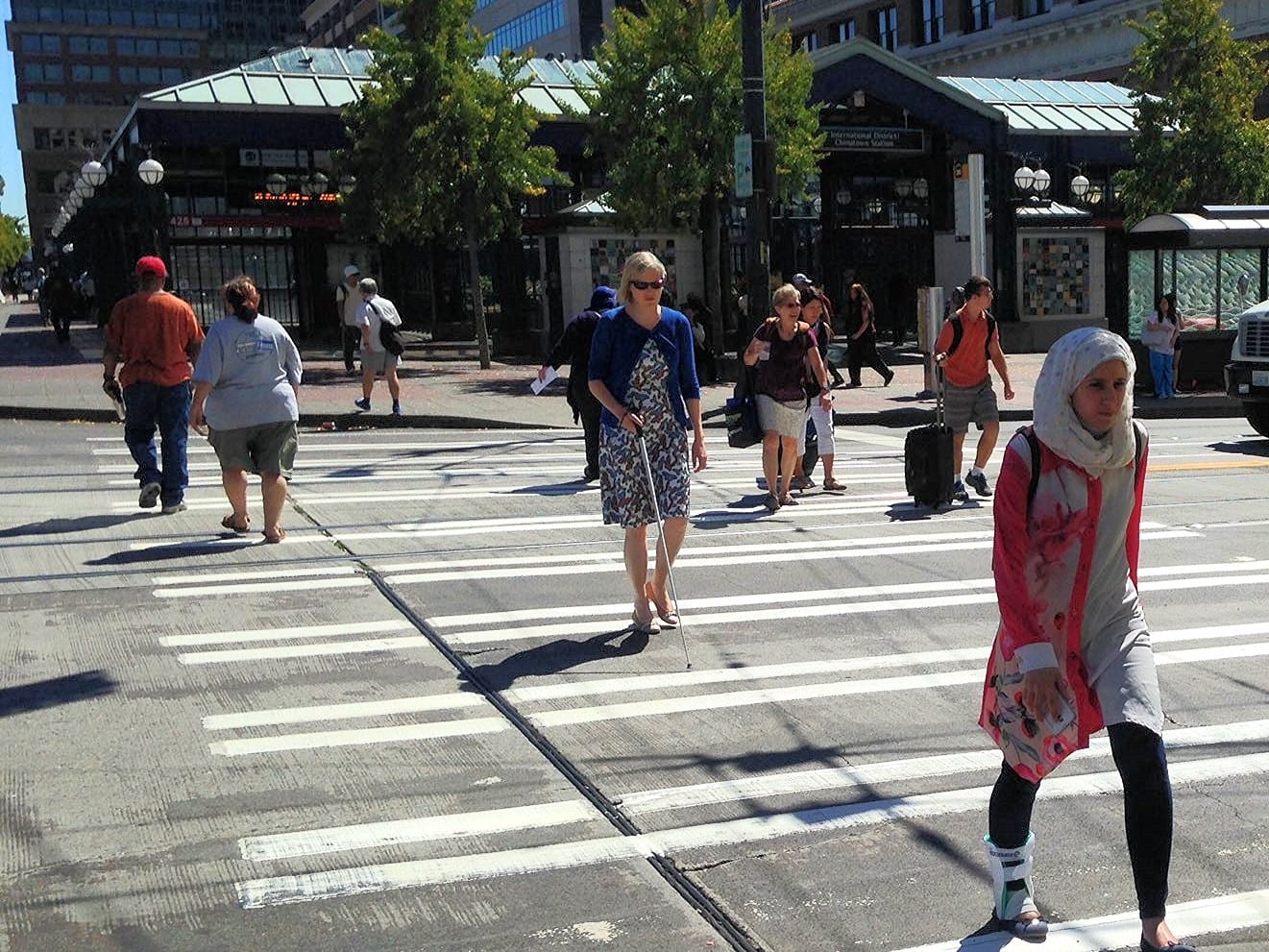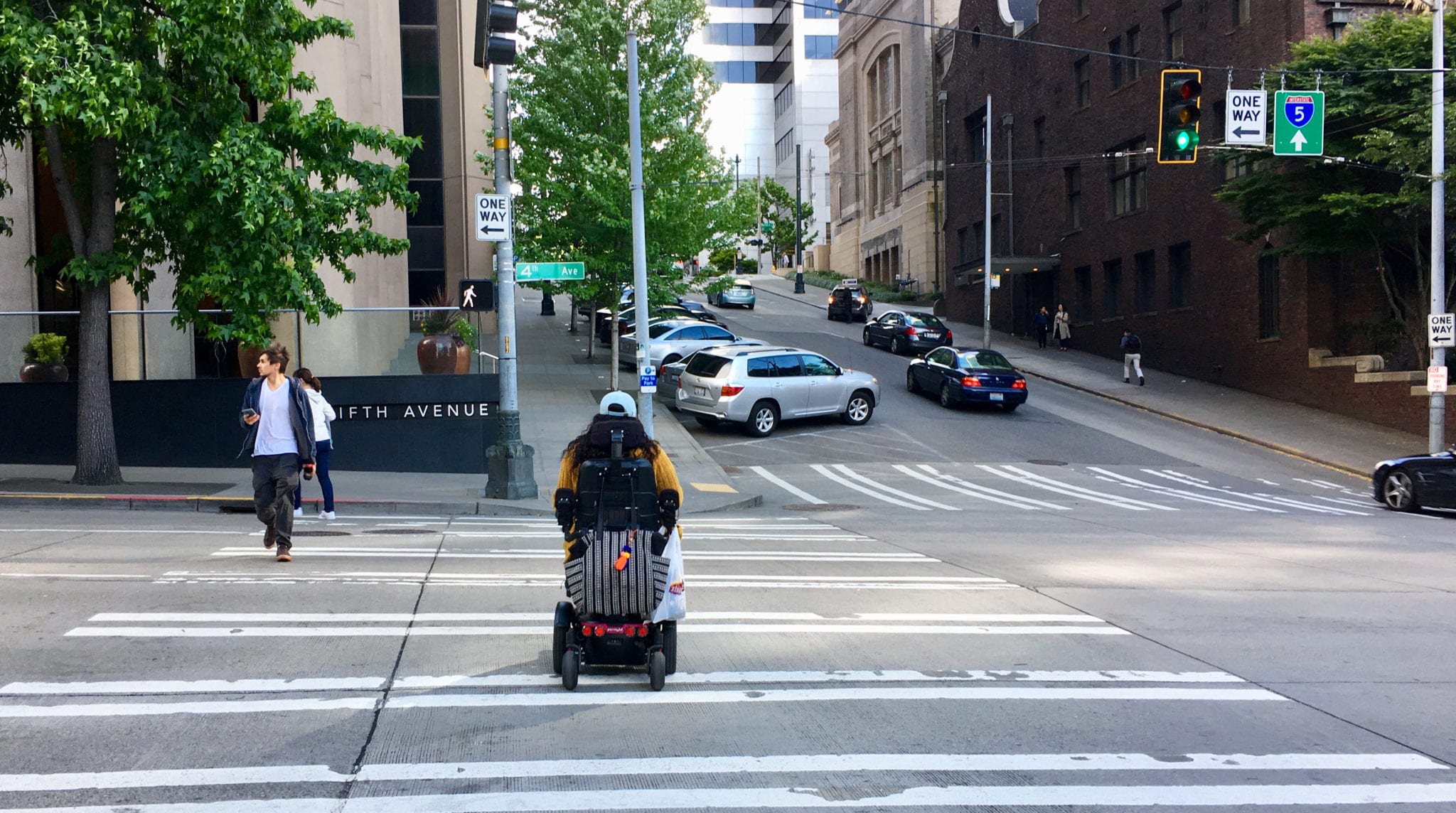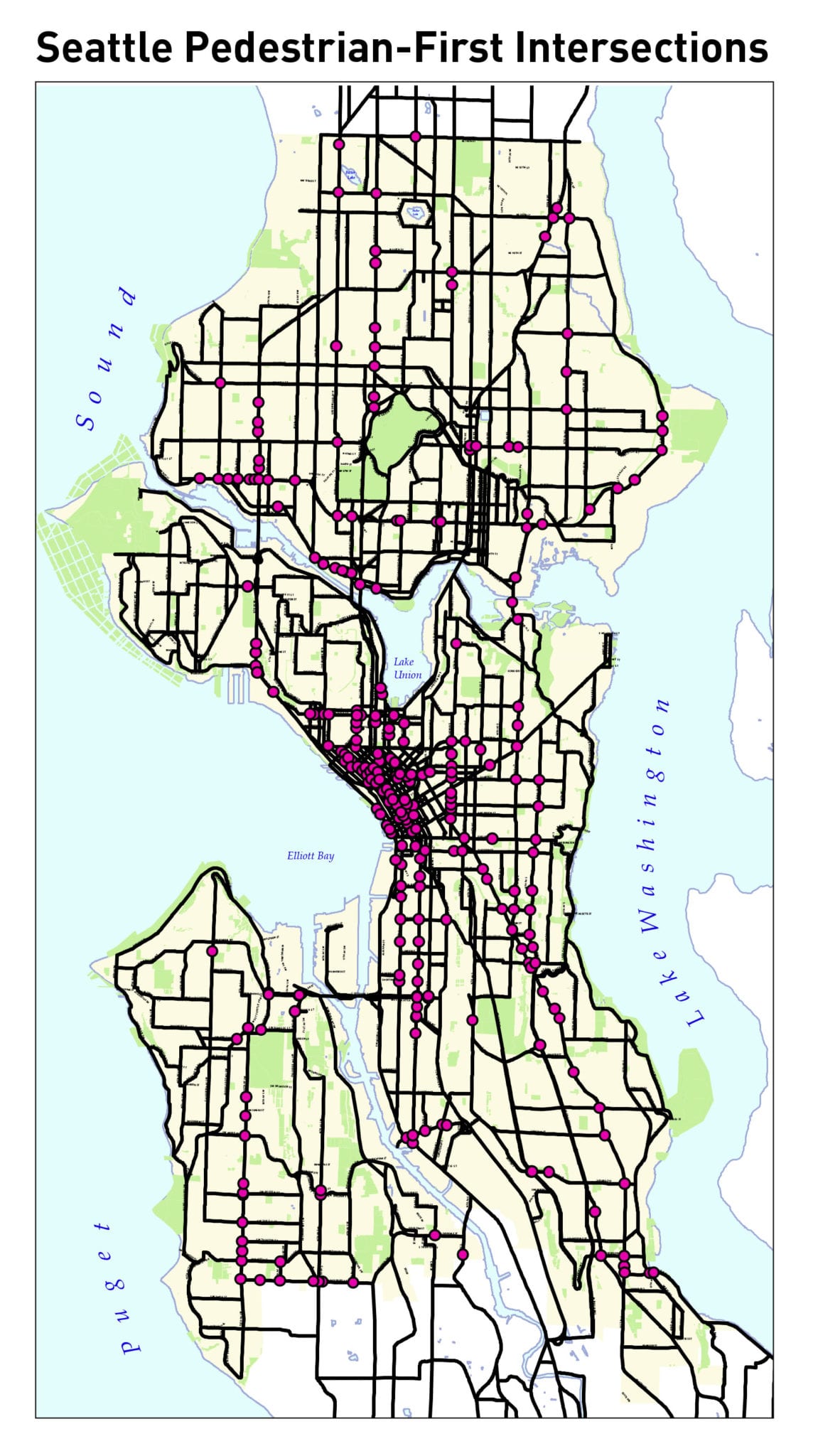
Of all the things we do to keep Seattle moving, public safety is by far our absolute highest priority. We are continuing to take steps to make it safer to cross the street and to make traffic signals work better for pedestrians:
- We’ve completed our Vision Zero goal to create 250 pedestrian-first intersections six months early. New data shows these safety upgrades are working and led to a 48% reduction in the number of people hit by cars crossing the street in these locations.
- We’ve changed most traffic signals in the parts of town where lots of people walk and roll to housing, shops, and restaurants to automatically show a walk signal every time cars get a green light.
- We are proposing a new policy for how we program walk signals to give people more time to cross the street and increase the number of automatic walk signals where you don’t have to push a button.
Making crosswalks safer is just one part of our plan to reach Vision Zero and end traffic deaths and serious injuries on city streets by 2030.
Seattle has also received national recognition for our work to lower speed limits on major streets citywide, which has been shown to reduce crashes by 22% in a recent study. A person walking, rolling, or biking is twice as likely to survive if they are hit by a person driving 25 MPH than someone going 30 MPH. Nearly half of Seattle’s major streets now have a 25 MPH speed limit.
A few seconds head start to cross the street can save a life.

An alarmingly high number of serious crashes occur in crosswalks when people crossing the street are hit by turning cars. One of the most effective ways that we can make crosswalks safer is to adjust traffic signals to give people a few seconds head start to begin walking across the street before cars get the green light.
This pedestrian-first safety upgrade (also called a “leading pedestrian interval”) makes people in the crosswalk much more visible to drivers and drastically reduces the risk of being hit by a car.
At the end of 2019, Mayor Durkan announced a goal to create 250 pedestrian-first intersections in 2020. We’ve been working double-time to get it done and have achieved our goal six months early.
There are now 275 pedestrian-first intersections across Seattle (nearly 30% of traffic signals).

That’s half a year ahead of schedule, and it’s not the first time we’ve surpassed our goals. In fact, we have now nearly doubled the original goal we set this time last year (which we reached a whole year early).
Our next step for this year will be to identify five road corridors to focus on for further signal optimization work, including taking a comprehensive look at how all the traffic signals on the corridor work together in order to look for opportunities to move more people safely along these routes. As always, we will continue to add pedestrian-first walk signals every time our engineers do work on a traffic signal which creates the opportunity.
New data shows 48% fewer people were hit by cars in Seattle crosswalks with this safety improvement.
Preliminary analysis shows that these traffic signals are working as expected and saving lives. We analyzed traffic data in the crosswalks where pedestrian-first intersections have been in place for at least a year and have seen a 48% reduction in the number of people hit by cars while crossing the street. Serious injuries and fatalities in these locations fell by 33%.
We prioritize these safety upgrades near schools, hospitals, community centers, urban centers, and intersections where we’ve seen a concerning history of crashes. We also add this safety improvement every time we do other traffic signal maintenance work, unless there’s a specific reason why it does not make sense in a particular location.
We’ve also been working to make more intersections show walk signals automatically every time there is a green light for cars.
Not having to press a button helps makes crosswalks more friendly and convenient. We’ve been focusing on making these changes in Urban Centers and Hub Urban Villages because these are the parts of town with the most people walking and rolling.
There are now nearly 450 walk signals which appear automatically, whether or not a button is pressed (about 80% of traffic signals in these parts of Seattle). We are continuing to work through evaluating the remaining intersections in these locations.
We’re proposing a new policy to make more automatic walk signals and give people more time to cross the street.

We’ve been watching and learning from the signals we’ve changed so far and are preparing to formalize our new approach to walk signals so that there will be more places where you won’t have to press a button to cross the street.
The proposed policy will also include guidelines to give people more time to cross the street and ensure that we are making our crosswalks safe for people of all ages and abilities. This will be done with a new formula to calculate how long red countdown timers are displayed based on the length of the crosswalk. The formula goes beyond minimum federal requirements and follows recommendations from advocates for people with disabilities.
There are some places where pushing a button still makes the most sense. For example, some crosswalks have been built specifically so pedestrians can push a button to stop car-traffic when they need to cross the street.
While our focus will continue to be on the densest parts of town with the most people walking and rolling, the new policy would also contain guidelines for other types of locations. For example, it specifies how our approach will differ in areas where foot traffic changes at certain times of day (like around schools) and in residential areas.

Push buttons still perform a critical function even at intersections with automatic walk signals by providing vibrating and tactile feedback for people with impaired vision or hearing. So we are not planning to remove push buttons and have been considering creating a placard to identify when a walk-signal is automatic.
We convened discussions with our Policy Operation Advisory Group (a recently created public advisory group made up of members from our existing Pedestrian, Bike, and Freight Advisory Boards) this week, and then will eventually recommend an updated policy to the Mayor.
Having a new policy will not change every traffic signal overnight. Individually evaluating and reprogramming traffic signals takes time, especially in places where the new timing would have an effect on other nearby intersections.
The goal will be to program walk signals more consistently, to always consider the perspective of people with disabilities, and to balance the needs of all modes of transportation so that everyone can get where they need to go safely and conveniently.
People are encouraged to send feedback or comments to POAG@seattle.gov.

